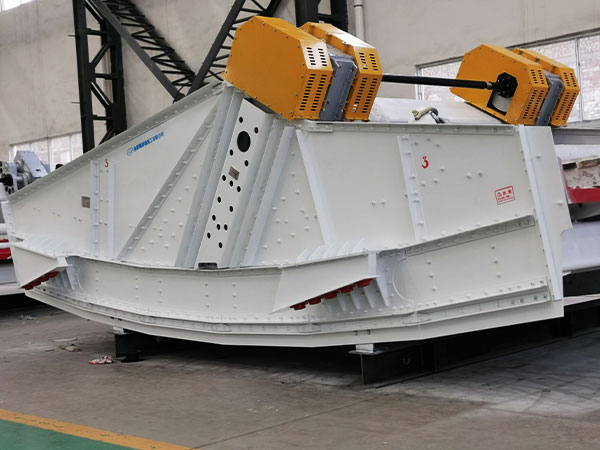Introduction of Calculation and Measurement Method of Vibrating Screen Screening Efficiency
When using a vibrating screen, the screen has two important process indicators: one is the processing capacity, which is a quantitative indicator that indicates the screening work. Another is the screening efficiency, which is a quality indicator that indicates the screening work. Among the products on the sieve, the more the number of fine grades that do not pass through the sieve holes, the worse the sieving effect is. In order to quantitatively evaluate the completeness of sieving, the index of sieving efficiency should be used.
Screening efficiency of vibrating screen: It is an indicator of the working quality of the screen, indicating the degree of screening operation and the quality of screening products. It is usually expressed as a percentage by the ratio of the weight of the undersize product obtained during sieving to the weight of the fractions smaller than the sieve size contained in the raw material.
Because it is difficult to weigh the product of the screening operation in actual production. However, it is possible to perform sieving analysis on each product of the screening operation, thereby measuring the percentage of fine fraction weight of the sieve size through which the ore feeding, the under-screen product and the over-screen product pass through the screening operation. How to calculate the screening efficiency of vibrating screen?

The screening efficiency can be calculated by the lower ore screen: E=β(α-θ)/α(β-θ)*100%.
α——The content of the particle size smaller than the sieve size in the raw material;
β——The content of the particle size smaller than the sieve size in the product under the sieve;
θ——The content of particles smaller than the sieve size in the product on the sieve.
Example: a vibrating screen with a sieve hole of 15 mm, after sampling and sieving analysis, it is known that the 15-0 mm particle size accounts for 50% of the sieved materials, and the product on the sieve contains 8% of the particle size, and the sieving efficiency is calculated. how many?
α (content of the raw material smaller than the size of the sieve size) = 50%, θ (the content of the product on the sieve smaller than the size of the sieve size) = 8%
So: E=100(α-θ)/α ore screen (100-θ)*100%=100(50-8)/50(100-8)*100% =91.3%

Because the screening efficiency of vibrating screen is affected by many factors, it depends on what material to be processed, the composition of the material, the purpose of screening and the moisture content and viscosity of the material.
Determination method of sieving efficiency
Take samples every 15-20 minutes in the material flow entering the sieve and the material flow on the sieve. Sampling should be carried out continuously for 2-4 hours. The average sample obtained is sieved in the inspection sieve. The sieve hole of the inspection sieve is consistent with the The mesh size of the sieve used in production is the same. The percentage content α and θ of the grades smaller than the sieve size in the raw material and the product on the sieve are respectively calculated, and the sieving efficiency can be calculated by substituting them into the formula.
If there is no inspection sieve with the same size as the sieve, you can use a set of sieves for sieving analysis, draw the results into a sieve analysis curve, and then calculate the percentage content of this grade from the sieve analysis curve. a and theta.
To sum up, the low efficiency of vibrating screen is affected by many factors. If the screen is worn, or the quality of the screen surface is not high, particles larger than the screen size will enter the product under the screen. If the screening efficiency increases abnormally and sharply, it is possible that the screen is severely worn, or the screen surface quality is not good. High, the sieve size does not meet the quality requirements, resulting in too many particles larger than the sieve size.



